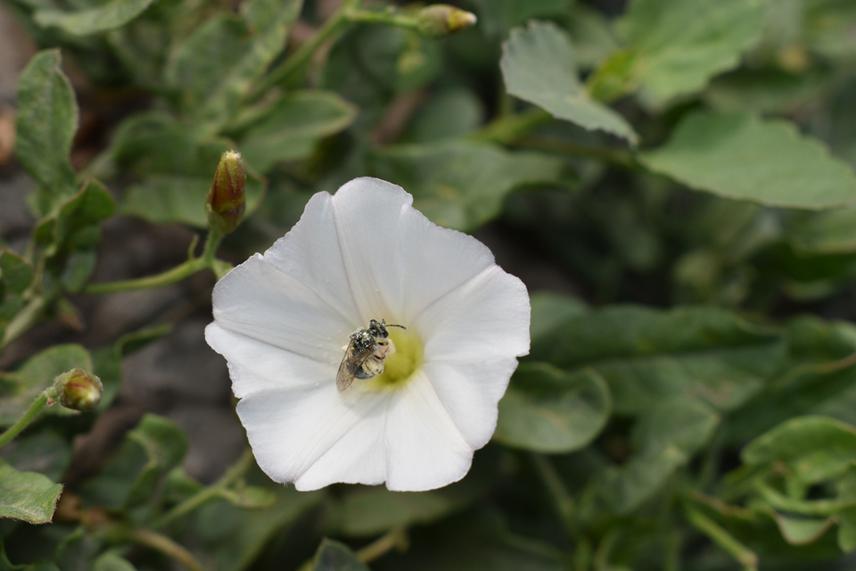Mariana Laura Allasino
The purpose of this project is to analyse the quality and quantity of the pollination service delivered by wild pollinators to horticultural seed crops of family farmers in a semi-arid zone of Argentina based on the wild plants at field edges, landscape heterogeneity and pollinator diversity. This project will generate knowledge about the practices of agricultural landscapes management that can improve yield and crop quality by increasing pollination service provided by abundant and diverse pollinators. With this information, I wish to help prevent pollinator loss, and also, I wish to contribute to the improvement of farmers' life quality and local food security.

Halictidae on Convolvulus bonariensis.
Pollinators play an essential role for ecosystem health and maintain biodiversity through the pollination of both native plants and domesticated crops. In Argentina, many of the fruits, vegetables and some cereal crops are dependent upon pollination for full fruit set. Worldwide, pollinator species are declining, especially in areas of agricultural intensification due to the conversion of natural areas to large extensions of homogeneous crops that are devoid of floral and nesting resources for wild bees. In Argentina, cultivated area with intensive monoculture has increased during the last 60 years, producing biodiversity loss. Given that biodiversity would be associated with greater heterogeneity, a useful strategy to conserve the availability of pollinators in spaces managed by human and to increase level of yields and quality of production, would be to maintain wild vegetation and to increase crop diversification.
However, few studies in semiarid zones of South America have explored these aspects as useful tools to enhance pollinator diversity and abundance in agroecosystems. San Juan, the study site of this project, is part of the desert Monte of Argentina and is the main producer of horticultural seed in the country. The majority of the producers of these productions correspond to family farmers. The characteristics of family farming and the fragility of this environment makes the agroecosystems of San Juan a good place to study how landscape heterogeneity could contribute to pollinators community’s maintenance and to the improvement of crop pollination service.